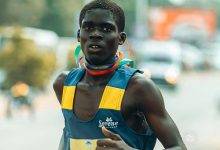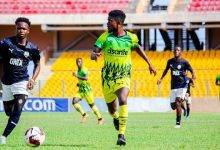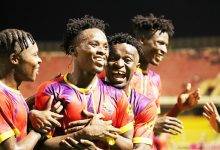
ACTING Deputy Director General (Technical) of the National Sports Authority (NSA), Mr Kwame Ampofi Jnr, recently delivered a paper on the topic: Grassroot Sports Talent Identification and Coaching Management, impressing on the need for the nation to focus on these areas for its sports development drive.
Below is the second part of the educative paper.
Before embarking on a Talent Identification process, the following factors must be considered:
Purpose for Talent Identification
The ‘Purpose of Talent Identification’, which is the first factor to consider, answers the WHY of a talent identification process, giving a definitive goal for the process. The WHY for Sports Talent Identification are as follows:
1. Discovering of potential (in young athletes), this includes looking out for:
i. Technical Skills – this refers to the ability of the individual to understand the processes and procedures applied during the playing of a particular sport.
ii. Tactical Abilities – The skills required in any sports that allows the athlete to effectively use cognitive abilities. This involves the ability to apply Strategy, Perceptual skills and Decision-making process and abilities,talent, and skill to the best possible advantage.
iii. Psychological Stability – this has to do with the emotional stability and control of the athlete taking into consideration the athlete’s readiness to learn, the drive and motivation to carry on improving and how curious or creative they are.
iv. Physical Stature – this refers to the athlete’s physical features including, body stature, arm reach, height, and weight at various levels of the process.
2. Recognising and unveiling talents the young athlete has potential in but are currently hidden from the understanding and reach of the young. For example, a 100-meter runner who has hidden potential to run 200 meters.
3. Setting up young athletes in the right sports discipline that will lead them easier into a successful and fulfilled professional sports career. This is a critical consideration as it will determine the overall success of an athlete.
Monitoring and Measuring Progress of Talents
Studies have had varying findings on the method to be used accurately to monitor and measure the WHY of Talent Identification.
There are basically two methods that can be used to monitor and measure the indicators that a particular sports identification process seeks (Howe, Davidson & Sloboda 1998). These methods are;Natural and Scientific.
i. Some studies support the use of natural methods which is limited to the use of the interactions between the coach and the player where the coach monitors the athlete overtime taking into consideration the WHY factors (purpose of the talent identification). These interactions can be measured through competitions, Test events, and constant training sessions.
ii. Notwithstanding the use of natural methods during Talent Identification, others recommend the application of scientific methods (Ziemainz and Culbin 2002, Lyle 1997).
According to Belyi and Hamilton (as cited in Nigam, 2010), application of scientific methods in talent identification involves application of a series of tests that are thought to measure key factors for success in a specific sport. These factors include muscle strength and lungs functionality. Such functions can be assessed using machines and scientifically proven processes (Borm 1997).
The Sports Talent Cycle
I. Talent Detection – This first stage refers to the spotting of certain qualities of the individual to play a certain sport. It is discovering those with potential from outside the sports in question. It is at this point that we determine if a player has the potential to benefit from a systematic programme of support and training (Williams Reilly, 2000). This stage examines the natural gifts of the individual that needs to be nurtured into usable talents in the career of the athlete.
II. Talent Identification – This can be defined as the recognition of current participants of a sport discipline with the potential to become elite sports athletes. Talent identification is a very critical point in the talent cycle as the career of an athlete can be made or destroyed if this stage of the process is missed.
III. Talent Development – It involves the specific attention to the position or style of play an athlete will adopt either in team or individual discipline. The Specific talent of an athlete is zoomed in at this point forward. This stage introduces a relationship between the coach and the athlete. The coaching and management relationship between the coach and the athlete from this point forward will have a great influence on performance.
IV. Talent Selection – Talent selection is the final selection of a Talent (Athlete) to play or perform in an elite competition. This stage completes the journey of a talent.
Factor that influence talent identification
The following factors influence Sports Talent Identification either positively or negatively. The presence or absence of these factors can determine the levels of outcomes of talent identification, taking into consideration the Physical, Psychological, Tactical and Technical abilities of an athlete.
i. Availability of a strong grassroot sports strategy or programme to encourage participation by children and young people at all levels, through schools, clubs, and community sports engagement.
ii. Availability of functional structures for athlete progression, either in leagues or age category competitions.
Exposure to competition not only plays a very vital role in the development of an athlete (Sotiriadou, 2005), but also provides a focal point for training and important motivation for daily training if provided at the right level and frequency (Rodgers, 2005). On the other hand, lack of exposure to quality competition will dull the most talented group of athletes as well (Sotiriadou, 2005). Exposure to competitions also promotes grassroot talent identification through the appropriate talent cycle or stages applied.
iii. Access to qualified coaches with described objectives, methodologies and with the necessary skills to facilitate the progression of an athlete from one stage of the talent cycle to the next.
Technical competence in addition to identifying the sports talents, technical factors also determine talent identification. Other studies suggest that a number of technical skills are required for aspiring athletes to be successful. Technical ability is of course based on the sport you are interested in or occupied and as such personnel with adequate knowledge in scouting or talent identification should be consulted in such regard to advice and provide the necessary recommendation for decision making.
iv. A Professional and target or goal-oriented relationship between a coach and an athlete.
v. General and sportive motor skills exhibited by talents during the talent identification process: jumping, running, throwing, catching, perception, and coordination.
vi. Quality and Accessible training facilities: Quality and accessible training facilities and equipment create a positive environment that encourages proper training, but lack of facilities or access to facilities and equipment is a limiting factor to grassroot talent identification development (Rogers, 2005).
Sports coaching
Sports Coaching can be defined as the process of motivating, guiding, and training an individual in preparation for any sporting hobby, career, or event (lifecoachingdirectory.com).
A modern coach possesses needed skills in his field and can apply modern scientific knowledge to achieve the set goal.
Coaching is a process of guided improvement and development in a single sport at identifiable stages of athlete development. Sport coaches train teams or individuals in various skills on how to improve their performances. They determine the level of instruction required by observing how the individual or team performs.
Relevance of a coach
The modern coach is relevant for various reasons which are obvious from the definition of coaching and who a coach is.
i. To monitor and ensure improvement for individual performers and the team.
ii. Planning of practice sessions for appropriate gains.
iii. Provide guidance and encouragement in reaching performance objectives.
iv.Provide leadership and source of empowerment for the performers.
Immediate and Major Stakeholders of a Coach
i. Athletes: the main client, resource and focus for the work
ii. Athletes Family: they have a 100% interest in the athlete, and the athlete listens to them.
iii. Coaching staff: The machinery that ensures that your instructions are carried out.
iv. Administrators & support staff: They ensure that all vital documentation and backroom engagements are in order, to enhance the smooth running of your coaching duties.





